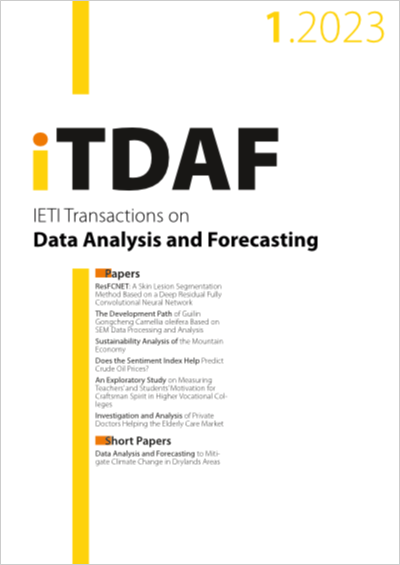Does the Sentiment Index Help Predict Crude Oil Prices?
DOI:
https://doi.org/10.3991/itdaf.v1i1.32683Keywords:
crude oil price, machine learning, sentiment index, random forest, support vector machine, long short-term memoryAbstract
The price fluctuations in the crude oil market remarkably influence the global economy since crude oil is an essential source of energy and plays a determinant role in most industrial sectors. The tremendous development of social media has generated many applications that can be used for sentiment analysis to improve the prediction of crude oil prices. Many researchers have also used technical indicators to predict oil prices. This study integrated several machine learning approaches—random forest, support vector machine, and long short-term memory—with a dynamic expanding moving window and fixed moving window to forecast one-period-ahead West Texas Intermediate (WTI) spot prices. We assessed the forecasting performance of these models using the root mean squared error and then compared prediction accuracy among the sentiment indicator, the technical indicator, and the lagged values of WTI spot prices using the Diebold–Mariano test. The forecasting simulation and empirical results show that the sentiment indicator is preferable to the technical indicator for forecasting WTI spot prices with machine learning approaches. Interestingly, we also find that using the sentiment indicator provides a better prediction performance than using lagged values of crude oil prices.
Downloads
Published
How to Cite
Issue
Section
License
Copyright (c) 2023 Jin Shang, Tamotsu Nakamura, Shigeyuki Hamori

This work is licensed under a Creative Commons Attribution 4.0 International License.


